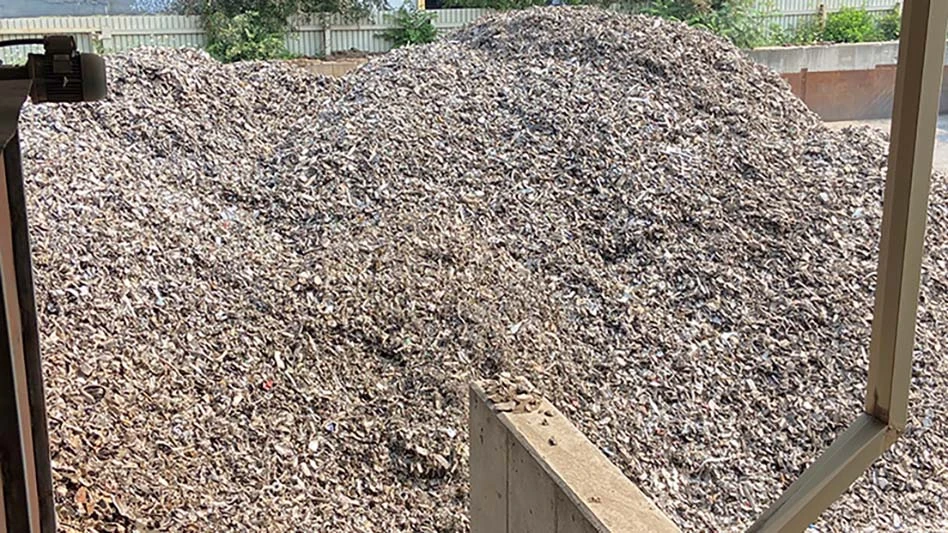
Recycling Today archives
Scrap processors by and large express satisfaction with scrap flows, margins and end markets the first two-thirds of this year, but there are some concerns about what might be around the corner.
Recyclers contacted in early August characterize flows from the construction, demolition and manufacturing sectors as largely steady, but point to declining ferrous prices leading to disappointing mixed, shredded nonferrous grade volumes.
“When the ferrous markets hit their low earlier this year, zorba was very much in short supply but volumes have come back,” says a recycler affiliated with a company that operates shredding plants.
Three other recyclers, however, had not seen a supply rebound as of early August, with one saying, “Volumes are off a lot in July.” A buyer in the Detroit area, where supplies are affected by summer maintenance and retooling efforts at auto factories, places a 20 percent decline on his year-on-year July volume.
Regarding both supply and demand, the pace of construction activity has the potential to affect both supply and demand in the United States and in sizable overseas markets.
While the U.S. construction sector has had a positive influence on demand since pandemic restrictions lifted, recyclers are among those hoping there is not a trend among U.S. Census Bureau data pointing to a slight decline in nonresidential construction spending.
“Domestic demand is starting to slow," a red metals processor in the Great Lakes region says. "Consumers seem to have more inventory on hand than they would like, as many consumers are currently starting to discuss a slowdown in their purchasing needs.”
The export market in Asia has long provided an alternative for nonferrous processors, but much of the boom of the past three decades has been tied to frenzied infrastructure spending and apartment tower construction in China.
Economists have long asked whether both types of construction in China have soared through a logical ceiling on demand, and recent economic news indicates that indeed may be the situation.
According to the U.S. Census Bureau, 94,770 tons of copper-bearing scrap headed from the U.S. to China in the first four months of the year. That marks a nearly 9.5 percent drop from the 104,620 tons shipped in the first four months of last year.
A more than 9 percent drop in export markets to China is unwelcome enough, but an unsettling possibility is that China’s scrap appetite can drop even more if its economy continues to stagnate. Also unwelcome is the notion that scrap shipments to several other nations have a China connection.
As China’s government imposed various scrap restrictions and (formerly) quotas, scrap metal buyers there increasingly set up shop in Malaysia and other Asian countries.
So far this year, Malaysia has been the second largest buyer of aluminum scrap exported from the U.S. (behind only India) while Thailand ranks fifth. Many of the secondary ingots produced in those two southeast Asian countries are shipped to China.
If the highest volume years of copper and aluminum scrap shipments to East Asia are in the rearview mirror, beneficiaries could be buyers in India and its neighboring nations and domestic consumers who will enjoy a little less overall competition.
For U.S. processors selling scrap, that is not necessarily good news in the short term. “The scrap can get sold [domestically], but prices are low compared to terminal markets,” a recycler in the Midwest says, with another processor adding, "The sell side has been difficult at this time.”
Latest from Recycling Today
- China to introduce steel export quotas
- Thyssenkrupp idles capacity in Europe
- Phoenix Technologies closes Ohio rPET facility
- EPA selects 2 governments in Pennsylvania to receive recycling, waste grants
- NWRA Florida Chapter announces 2025 Legislative Champion Awards
- Goldman Sachs Research: Copper prices to decline in 2026
- Tomra opens London RVM showroom
- Ball Corp. makes European investment





